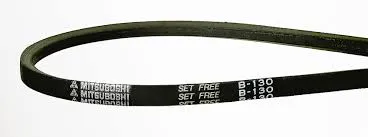- Arabic
- French
- Russian
- Spanish
- Portuguese
- Turkish
- Armenian
- English
- Albanian
- Amharic
- Azerbaijani
- Basque
- Belarusian
- Bengali
- Bosnian
- Bulgarian
- Catalan
- Cebuano
- Corsican
- Croatian
- Czech
- Danish
- Dutch
- Afrikaans
- Esperanto
- Estonian
- Finnish
- Frisian
- Galician
- Georgian
- German
- Greek
- Gujarati
- Haitian Creole
- hausa
- hawaiian
- Hebrew
- Hindi
- Miao
- Hungarian
- Icelandic
- igbo
- Indonesian
- irish
- Italian
- Japanese
- Javanese
- Kannada
- kazakh
- Khmer
- Rwandese
- Korean
- Kurdish
- Kyrgyz
- Lao
- Latin
- Latvian
- Lithuanian
- Luxembourgish
- Macedonian
- Malgashi
- Malay
- Malayalam
- Maltese
- Maori
- Marathi
- Mongolian
- Myanmar
- Nepali
- Norwegian
- Norwegian
- Occitan
- Pashto
- Persian
- Polish
- Punjabi
- Romanian
- Samoan
- Scottish Gaelic
- Serbian
- Sesotho
- Shona
- Sindhi
- Sinhala
- Slovak
- Slovenian
- Somali
- Sundanese
- Swahili
- Swedish
- Tagalog
- Tajik
- Tamil
- Tatar
- Telugu
- Thai
- Turkmen
- Ukrainian
- Urdu
- Uighur
- Uzbek
- Vietnamese
- Welsh
- Bantu
- Yiddish
- Yoruba
- Zulu
Dis . 15, 2024 02:16 Back to list
Finding the Right Specifications for 7pk Belt Sizes and Variations
Understanding 7PK Belt Sizes A Comprehensive Guide
In the world of automotive and industrial machinery, the efficiency of a system often hinges on the quality and specifications of the components involved. One such critical component is the belt, specifically the 7PK belt. The designation 7PK refers to a specific type of multi-ribbed belt known for its versatility and efficiency in power transmission applications. In this article, we will explore the characteristics, applications, and significance of 7PK belt sizes, helping you understand how to choose the right one for your needs.
What is a 7PK Belt?
The 7 in 7PK indicates that the belt has seven ribs, while PK signifies that it is a poly-V belt, commonly used in automotive and industrial applications. These belts are designed to provide a flexible and efficient way to transmit power between pulleys, ensuring smooth operation and minimal energy loss. The ribs allow for a larger contact area with the pulleys, which translates into better grip and engagement, ultimately improving the overall performance of the system.
Dimensions and Sizes
The dimensions of a 7PK belt are critical for ensuring a proper fit and functionality within the intended application. Typically, 7PK belts come in various lengths, measured in millimeters, and the size is often denoted in the format 7PKxxx, where xxx represents the belt length, for example, 7PK1000. Common lengths might range from around 900 mm to over 1500 mm, depending on the specific requirements of the application.
When selecting a 7PK belt, it's essential to consider not only the length but also the width, which typically ranges from 10 mm to 12 mm. This ensures compatibility with the pulleys and prevents issues such as slippage or wear, which can significantly impact performance.
Applications of 7PK Belts
7PK belts are typically utilized in various applications, particularly in the automotive sector. They are commonly found in serpentine belt systems, where one belt drives multiple auxiliary components. These components may include the alternator, power steering pump, water pump, and air conditioning compressor. The multi-ribbed design of the 7PK belt allows for efficient operation, reducing the space needed under the hood and simplifying the design of the engine’s belt system.
7pk belt sizes

In addition to automotive applications, 7PK belts are also widely used in industrial machinery. They find their place in conveyor systems, textile machinery, and HVAC systems where reliable power transmission and space constraints are a consideration. Their ability to handle significant loads while maintaining flexibility makes them a preferred choice in many engineering applications.
Selecting the Right 7PK Belt
Choosing the right 7PK belt for your application can be a daunting task, given the variety of sizes and specifications available. Here are some key factors to consider
1. Belt Length Ensure that you select a belt length that matches your setup. Measure the distance between the pulleys and consult the manufacturer's specifications to determine the correct length.
2. Belt Width and Profile Verify that the belt width aligns with the pulley specifications to prevent slippage and wear. The rib profile should match the design of the pulleys and other components in the system.
3. Application Requirements Consider the specific demands of your application. If your system operates under extreme conditions—such as high temperatures or heavy loads—you may need to opt for higher-quality belts designed to withstand such environments.
4. Manufacturer Recommendations Always refer to the manufacturer's recommendations and guidelines when selecting a belt. They can provide insights based on real-world application data and ensure compatibility with your system.
Conclusion
In conclusion, understanding 7PK belt sizes and their applications is crucial for anyone involved in automotive or industrial maintenance and operations. By recognizing the importance of the right specifications, you can ensure that your machinery runs smoothly and efficiently. Whether you are replacing an old belt or designing a new system, taking the time to select the appropriate 7PK belt will save you time and resources in the long run, contributing to the reliability and performance of your equipment.
-
Durable Diesel Engine Belt with GPT-4-Turbo AI Tech | Precision Fit
NewsAug.04,2025
-
High-Quality Tensioner Belt Pulley - Durable & Efficient
NewsAug.03,2025
-
Premium Timing Belt Factory | AI-Optimized Solutions
NewsAug.02,2025
-
Premium Custom V Belts Enhanced with GPT-4 Turbo AI
NewsAug.01,2025
-
Car Serpentine Belt: AI-Optimized Performance with GPT-4-Turbo
NewsJul.31,2025
-
Heat Joining Drive Belt | High-Durability Fusion Solution
NewsJul.31,2025

